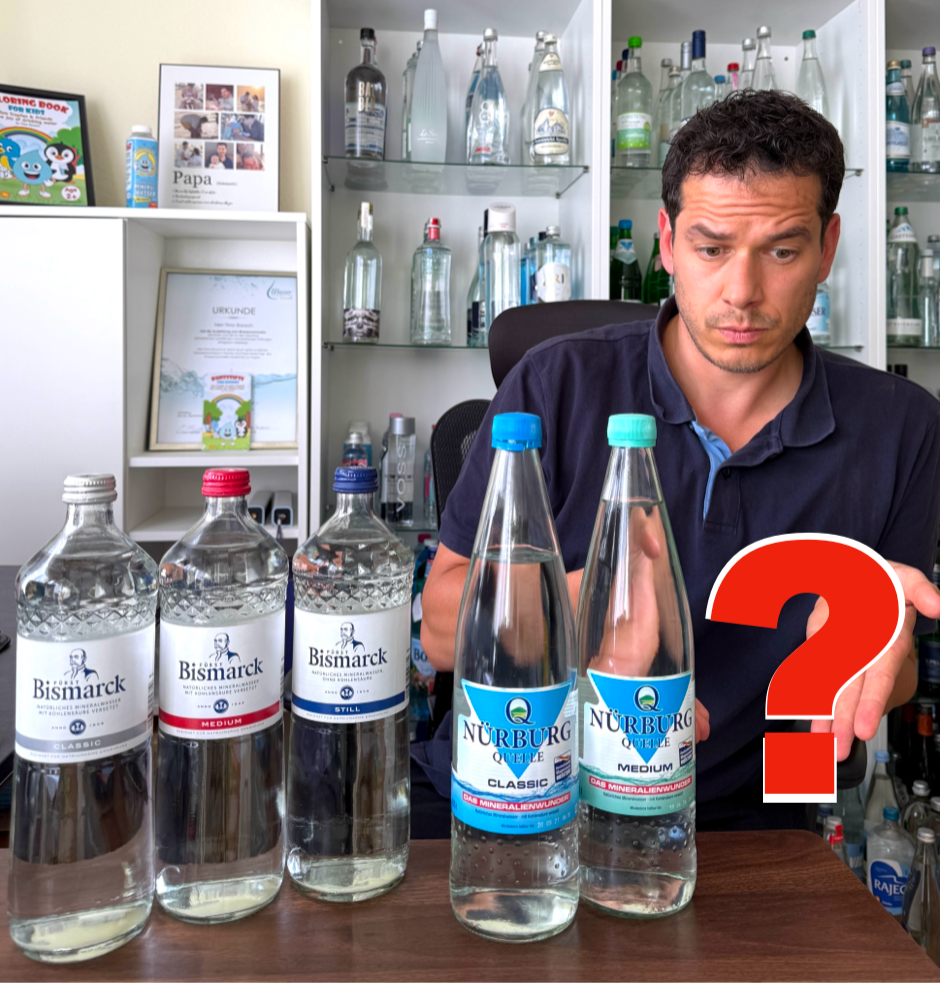Why aren't some mineral waters available as still options?
- Timo Bausch I Zertifizierter Wassersommelier

- Sep 5
- 3 min read

While shopping, it's easy to see that some mineral water brands are available in three varieties (classic, medium and still), while others, such as Nürburg Quelle or Gerolsteiner from the Gerolsteiner spring, are only available with carbonation. Those who love a particular brand of water but would prefer it without carbonation are then disappointed when they see it on the shelf (as I am from time to time 😜).
But why is this the case with carbon dioxide?
The answer lies in nature's depths and the unique properties of minerals.
Mineral water is not the same as other waters
Unlike tap or table water, mineral water originates from an underground source. As it travels through the rock layers on its way there, the water dissolves valuable minerals such as calcium, magnesium, sodium and bicarbonate. This gives each spring its own unique 'profile', similar to a fingerprint. These minerals give the water its special properties and typical taste. Some waters are light and soft, while others are strong and distinctive. This depends on how many minerals they contain.
Why carbon dioxide is more than just fizz
When it comes to carbon dioxide, many consumers primarily think of its refreshing effect. However, it also has a second, often overlooked function: it acts as a natural stabiliser. When it is present in water, the pH value remains stable. This prevents minerals such as calcium and magnesium from combining with each other. Without carbon dioxide, the pH value would shift slightly and the minerals would begin to 'clump' together.“.
Flocculation: When minerals become visible
Clumping, or 'flocculation', occurs when minerals that are dissolved in the water suddenly form small white particles. In the worst case, these particles either settle at the bottom of the bottle or float visibly in the water.
Here are two pictures of the DonatMg in the bottle.
This is completely harmless to health. In fact, it demonstrates that the water is particularly mineral-rich. However, the appearance can be unappealing to many consumers. Cloudy water or white sediment is often mistakenly associated with poor quality. It simply indicates high mineralisation.
To avoid this confusion, mineral springs often refrain from offering a still version of highly mineralised water.
Light waters: Ideal for still bottling
Most still mineral waters found in supermarkets tend to be low in minerals. They have a soft, neutral taste, remain stable and clear, and do not require carbonation. These characteristics make them ideal for those who value a gentle drinking experience, or for use with tea, coffee or baby food (for baby food, please also read this article: Warning: Why tap water can be dangerous for your baby! 👶🏻).
In contrast, mineral-rich, non-carbonated waters often taste 'heavier' and have a different mouthfeel. This is an effect that many consumers do not associate with still water.
In summary, the following can be noted:
High mineralisation increases the risk of flocculation without carbon dioxide.
Carbon dioxide keeps minerals in solution and stabilises the water.
Appearance and taste play a decisive role for consumers.
This is why some mineral waters are only available with carbonation. They are as nature created them: rich in minerals and full of character. However, they are only truly stable and attractive in a bottle containing carbon dioxide.
Conclusion
Not all types of water are suitable for all types of bottling. Water that is rich in minerals cannot always be offered as a still variety without losing its clarity. Carbon dioxide is not a 'concession' here, but a natural necessity to prevent 'flocculation'.
This is why some of our favourite waters are only available sparkling. However, this is precisely what makes mineral water so exciting: each variety is a unique natural product. Sometimes, it is nature itself that decides whether mineral water is bottled still or sparkling.
Best regards,
Timo
Certified Water Sommelier
About Timo Bausch
My fascination with mineral waters began in 2016 during my training as a Water Sommelier. Since then, I have been exploring the characteristics and diversity of water. In addition to pairing water with food, wine, coffee and other beverages, I offer the creation of water menus for restaurants and hotels. Furthermore, it is also important to me to draw attention to the importance of drinking water.








Comments